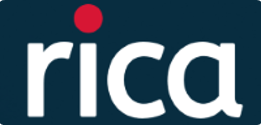Study and implementation of an electrical impedance tomograph
Keywords:
tomography, impedance, EIDORSAbstract
Electrical impedance tomography (EIT) is an image reconstruction technique by measuring electrical impedance. In this work, we seek to study the theoretical and practical foundations of the technique. Elaborate the design of the measurement channel with a single current source at a frequency of 50 kHz, for excitation of 16 to 32 electrodes. Develop and evaluate the steps of the system, from the generation of the voltage signal to control the current source, to the use of multiplexers for electrode excitation. Evaluate and test the channel by collecting measurements in a phantom with aqueous solution content. Obtain the data and use the EIDORS algorithm together with MATLAB to reconstruct the final image. Show the conceptual affinities between current systems and the developed system.
References
FRANCO, S. Design with operational amplifiers and analog integrated circuits. New York: McGraw-Hill, 2002.
GRAHAM, B. M. Enhancements in Electrical Impedance Tomography (EIT) Image. Ottawa: Univerity of Ottawa, 2007.
HENDERSON, R. P.; WEBSTER, J. P.; SWANSON, D. K. A thoracic electrical impedance. Annual Conference of Engineering in
Medicine and Biology, 1978.
HOLDER, D. S. Electrical Impedance Tomography: Methods, History and Applications. [S.l.]: Bristol: Institute of Physics Publishing,
HOVNANIAN, A. L. D. Papel da tomografia de impedância elétrica em pacientes portadores de hipertensão arterial pulmonar. USP. São
Paulo. 2013.
MALMIVUO, J.; PLONSEY, R. Principles and Applications of Bioelectric and Biomagnetic Fields. New York: Oxford University Press,
PORTO, R. W. Projeto e avaliação de um canal de medição de bioimpedâncias. UFRGS. Porto Alegre. 2009.
Downloads
Published
How to Cite
Issue
Section
License
Copyright (c) 2021 Interdisciplinary Journal of Applied Science

This work is licensed under a Creative Commons Attribution-NonCommercial-NoDerivatives 4.0 International License.
Authors keep the copyright and cede to the journal the right of publishing first. Published works are licensed under a Creative Commons Attribution 4.0 International (CC BY 4.0) license, allowing the sharing of the work with recognition of the authorship and initial publication in this journal.






